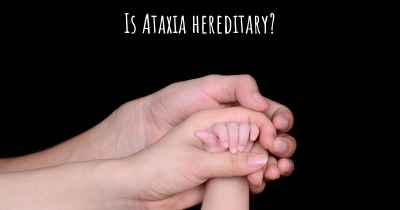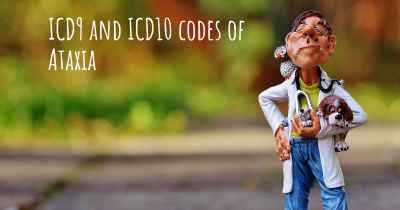Living with Ataxia. How to live with Ataxia?
Can you be happy living with Ataxia? What do you have to do to be happy with Ataxia? Living with Ataxia can be difficult, but you have to fight to try to be happy. Have a look at things that other people have done to be happy with Ataxia

Living with Ataxia
Ataxia is a neurological condition that affects coordination and balance. It can have a significant impact on daily life, but with the right strategies and support, individuals with ataxia can lead fulfilling lives. Here are some tips and recommendations for living with ataxia:
1. Seek Medical Advice and Support
If you suspect you have ataxia or have been diagnosed with it, it is crucial to consult with a healthcare professional who specializes in neurological disorders. They can provide an accurate diagnosis, offer treatment options, and guide you on managing symptoms effectively. Additionally, joining support groups or connecting with others who have ataxia can provide emotional support and valuable insights.
2. Develop a Care Team
Building a care team consisting of healthcare professionals, family members, and friends is essential for managing ataxia. This team can help you navigate daily challenges, provide assistance when needed, and offer emotional support. Regular communication with your care team ensures that everyone is on the same page and can address any concerns or changes in your condition promptly.
3. Adapt Your Environment
Modifying your living environment can greatly enhance your safety and independence. Consider making the following adjustments:
- Remove hazards: Clear pathways of clutter, secure loose rugs, and ensure good lighting to minimize the risk of falls.
- Install handrails and grab bars: These can provide stability and support in areas such as staircases, bathrooms, and hallways.
- Use assistive devices: Utilize mobility aids like canes, walkers, or wheelchairs to improve balance and reduce the risk of falls.
- Arrange furniture: Rearrange furniture to create open spaces and reduce obstacles that may impede movement.
4. Exercise and Physical Therapy
Engaging in regular exercise and physical therapy can help manage ataxia symptoms and improve overall well-being. Consult with a physical therapist who specializes in neurological conditions to develop a personalized exercise plan. Exercises that focus on balance, coordination, and strengthening core muscles can be particularly beneficial. Remember to start slowly and gradually increase intensity to avoid overexertion.
5. Assistive Technology
Explore the various assistive technologies available to assist with daily activities. These can include:
- Speech-to-text software: Use speech recognition software to convert spoken words into written text, making communication and writing tasks easier.
- Smart home devices: Automate tasks such as turning on lights, adjusting temperatures, or controlling appliances through voice commands or smartphone apps.
- Adaptive utensils and tools: Utilize specialized utensils, grips, or tools designed for individuals with limited dexterity to make eating, cooking, and other tasks more manageable.
6. Manage Fatigue and Stress
Ataxia can often lead to increased fatigue and stress levels. It is important to prioritize self-care and implement strategies to manage these challenges:
- Pace yourself: Break tasks into smaller, manageable segments, and take regular breaks to conserve energy.
- Practice relaxation techniques: Explore techniques such as deep breathing, meditation, or yoga to reduce stress and promote relaxation.
- Get sufficient rest: Ensure you have a comfortable sleep environment and establish a regular sleep routine to optimize rest and recovery.
7. Nutritious Diet
Maintaining a healthy and balanced diet is crucial for overall well-being. Consider the following dietary recommendations:
- Stay hydrated: Drink an adequate amount of water throughout the day to support bodily functions.
- Consume nutrient-rich foods: Include a variety of fruits, vegetables, whole grains, lean proteins, and healthy fats in your diet.
- Consider supplements: Consult with a healthcare professional to determine if any supplements, such as vitamin D or B12, are necessary.
8. Emotional Well-being
Living with ataxia can be emotionally challenging at times. It is important to prioritize your emotional well-being:
- Seek emotional support: Connect with support groups, counseling services, or therapists who specialize in chronic conditions.
- Engage in hobbies and activities: Pursue activities that bring you joy and provide a sense of accomplishment.
- Practice self-compassion: Be kind to yourself and acknowledge that it is okay to have both good and bad days.
Remember, ataxia affects individuals differently, so it is essential to tailor these recommendations to your specific needs. Regular communication with healthcare professionals and your care team will help ensure you receive the best support and guidance for managing your ataxia effectively.
Posted Sep 13, 2017 by Brian 1500
Posted Dec 2, 2017 by Devin 1500
Play a lot and laugh a lot more.
Posted Mar 28, 2017 by PAULA 600








